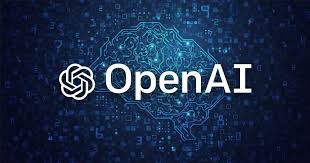Unlocking the Power of Deep Thinking: A Dive into OpenAI's o1

The world of artificial intelligence is constantly evolving, and OpenAI has consistently been at the forefront of groundbreaking advancements. Their latest marvel, the o1 and o1 “mini” models, are generating significant buzz for their enhanced reasoning capabilities. These models are designed to “think deeply,” approaching problems systematically and demonstrating remarkable improvements in accuracy, particularly in complex reasoning tasks.
The Evolution of Thought in AI
Traditional large language models (LLMs) like GPT-4 often rely on statistical probabilities to predict the next word in a sequence. While effective for many language-based tasks, this approach falters when confronted with intricate problems requiring multi-step reasoning. Imagine a student attempting to solve a complex mathematical equation without a structured approach – they might easily lose track of the steps involved.
This is where Chain-of-Thought (CoT) reasoning comes into play. CoT breaks down complex problems into smaller, more manageable steps, allowing the model to focus on one aspect at a time. It’s like providing the student with a clear roadmap to navigate through the equation.
OpenAI o1: Integrating CoT at its Core
Previous LLMs often required users to explicitly guide them through CoT reasoning via carefully crafted prompts. OpenAI o1, however, integrates CoT directly into its architecture. This means the model can handle complex reasoning natively, significantly reducing the need for extensive prompting.
Prompting o1 for Optimal Performance
Given its internal reasoning capabilities, prompting o1 effectively differs from earlier models:
- Keep prompts simple: The model is designed to handle reasoning independently. Complex instructions can hinder performance.
- Avoid CoT in prompts: Explicit reasoning in the prompt can be redundant and counterproductive.
- Use delimiters for structure: Delimiters like “###” or XML tags help the model distinguish different sections or steps within a prompt.
- Limit Additional Retrieval-Augmented Generation (RAG): While context is helpful, excessive irrelevant information can overwhelm the model.
Unveiling o1’s Capabilities and Limitations
Research indicates that o1 excels in tasks requiring structured thinking, outperforming earlier models in several domains, including:
- PhD-level science benchmarks
- Competitive programming
- Advanced math problem-solving
However, o1 does have limitations:
- Hidden CoT process: The model’s internal reasoning is inaccessible, making it difficult to analyze its decision-making process.
- Limited features: Features like tool integration are not yet available.
- Response time: o1 takes longer to generate responses, which may not be ideal for latency-sensitive applications.
- Overkill for simpler tasks: o1’s advanced capabilities are unnecessary for basic tasks, leading to inefficient resource use.
- Limited use in creative domains: Human evaluators found o1 less effective in creative writing tasks compared to other models.
The Future of AI with o1
Despite these limitations, OpenAI o1 represents a significant leap forward in AI development. Its ability to “think deeply” and approach problems systematically opens up exciting possibilities for the future.
Imagine AI systems capable of handling complex, multi-step tasks, such as:
- Advanced planning and decision-making: o1 could be used for higher-level planning, while faster models handle execution.
- Scientific discovery and research: o1’s reasoning capabilities could accelerate breakthroughs in fields like medicine and materials science.
- Automated problem-solving in various industries: From finance to logistics, o1 could help optimize complex processes.
OpenAI o1 is still in its early stages, but it represents a crucial step toward the next generation of AI systems. As the technology matures and its limitations are addressed, we can expect even more groundbreaking applications to emerge.
Conclusion
OpenAI o1’s “deep thinking” capabilities mark a significant milestone in AI evolution. By integrating CoT reasoning at its core, o1 demonstrates remarkable improvements in accuracy and the ability to tackle complex problems. While there are limitations to consider, the potential applications of o1 across various domains are vast and inspiring. As we continue to explore and harness the power of deep thinking AI, we move closer to a future where AI systems can truly understand, reason, and solve problems in ways that were once considered the exclusive domain of human intelligence.
Talk to Us
Ready to unlock the full potential of your model AI?
Our expert team will empower your AI models to achieve peak performance, ensuring they are not only accurate and efficient but also safe, ethical, and aligned with your brand values. Don’t miss out on the AI revolution.
Contact us today and let’s discuss how we can elevate your AI model to new heights!